Southern Brown Bandicoot
Southern Brown BandicootIsoodon obesulus obesulus | |
|---|---|
| Kingdom: | Animalia |
| Phylum: | Chordata |
| Class: | Mammalia |
| Order: | Peramelemorphia |
| Sub Class: | Marsupiala |
| Family: | Peramelidae |
| Status | |
| Australia: | Endangered EPBC Act listed |
| Victoria: | Endangered (FFG Threatened list 2024) |
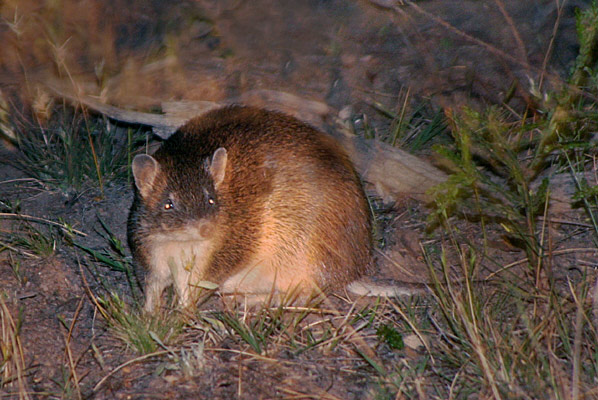
Southern Brown Bandicoot. Image: Annette Rypalski, Mt Rothwell Biodiversity Interpretation Centre, Lara.
The Southern Brown Bandicoot Isoodon obesulus obesulus is one of six species of bandicoots which have either current or historic records in Victoria.
- Pig-footed Bandicoot Chaeropus ecaudatus, extinct in Victoria and the rest of Australia.
- Short-nosed Bandicoot Isoodon sp. (c.f.auratus), extinct in Victoria.
- Western Barred Bandicoot Perameles bougainville fasciata, extinct in Victoria and mainland Australia.
- Eastern Barred Bandicoot Perameles gunnii, extinct in the wild in Victoria.
- Southern Brown Bandicoot Isoodon obesulus, endangered in Victoria.
- Long-nosed Bandicoot Perameles nasuta, not threatened in Victoria.
Distribution
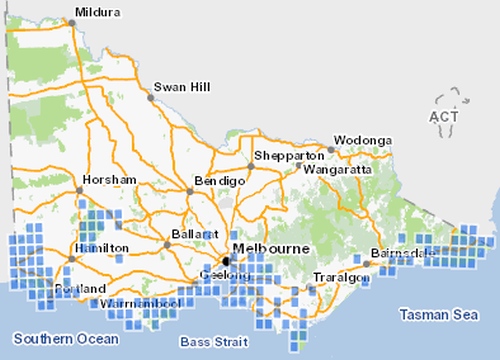
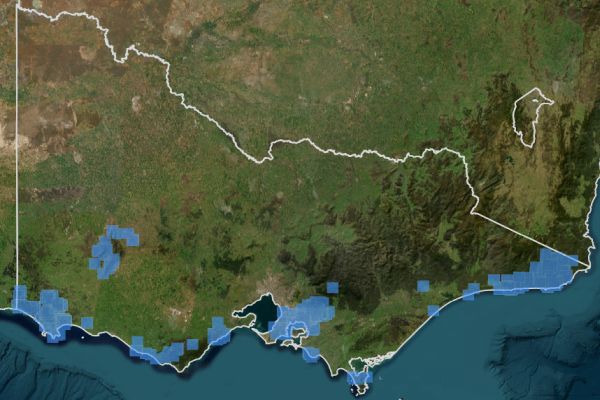
In Victoria, the Southern Brown Bandicoot occurs south of the Great Diving Range, mainly at lower altitudes and generally within 50 km of the coastline, exceptions being the Greater Grampians bioregion and the Glenelg Plain bioregion.
Local Government Areas containing Southern Brown Bandicoot records.
(Number of records) Source: ALA 2016.
- Glenelg Shire (315)
- East Gippsland Shire (220)
- Cardinia Shire (186)
- Sur Coast Shire (106)
- Southern Grampians Shire (51)
- Casey City (43)
- Northern Grampians Shire (36)
- Moyne Shire (30)
- Frankston City (29)
- Corangamite Shire (16)
- Mornington Peninsula Shire (16)
- Ararat Rural City (14)
- Monash City (12)
- Yarra Ranges Shire (10)
- Colac Otway Shire (7)
- West Wimmera Shire (7)
- Baw Baw Shire (6)
- Knox City (6)
- South Gippsland Shire (5)
- Bass Coast Shire (3)
- Greater Geelong City (2)
- Banyule City (1)
- Bayside City (1)
- Darebin City (1)
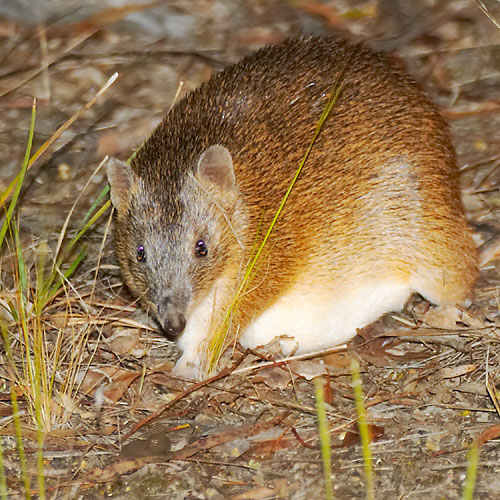
Ecology & Habitat
Habitat comprises scrubby heathlands and woodlands often associated with well drained soils.
There are strong associations between habitat quality and fire events for this species with favourable characteristics being a mosaic of small scale burnt areas undergoing different stages of post fire renewal. Less favourable circumstances are long periods (20 years) without fire or on the other hand large scale fires which reduce habitat age class diversity or too frequent burning which does not allow enough time for habitat and ecological processes to develop.
The Southern Brown Bandicoot can adapt to modified landscapes in agricultural, residential and commercial land so long as suitable habitat is present. Studies have found that bandicoot occupancy is higher along artificial waterways than along roadsides or within reserves (Bruce et al. 2022).
Threats
Introduced predators such as Foxes and Feral Cats pose a significant threat to this species. There are instances where the Southern Brown Bandicoot as well as other species of bandicoot can thrive when they are protected from predators when behind predator proof fencing, e,g., Eastern Barred Bandicoot at Hamilton Community Parklands and Woodlands Historic Park, Southern Brown Bandicoot and Eastern Barred Bandicoot at Mt Rothwell near Lara. In unprotected situation in the wild it is very important to have predator control programs in place.
Clearing of habitat either completely destroys populations or forces bandicoots into other fragmented areas of habitat making them more susceptible to predation.
Recent research highlights that where bandicoots are known to occur along waterways, both artificial and natural the retention of habitat needs to be considered when undertaking maintenance activities such as weed control, slashing, drainage and removal of vegetation.
Conservation & Management
The conservation status of Southern Brown Bandicoot was re-assessed from Near Threatened in 2013 (DSE 2013) to Endangered in 2021 Flora and Fauna Guarantee Act Threatened List Victoria (DELWP 2021). It is still considered Endangered (FFG Threatened List 2025).
Southern Brown Bandicoot project - St Helens Reserve, Yambuk
A community Landcare project finished in 2023 involving improved management of the 32 ha reserve managed by Parks Victoria.
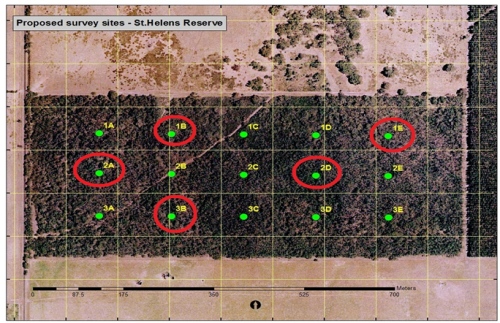
The community is involved with revegetation of adjoining roadsides and private land in proximity to the reserve in order to create wildlife corridors to other small reserves. Predator control of foxes and cats to protect the bandicoots. Remote camera monitoring of the bandicoots and other wildlife are carried out on a regular basis. Prior to re-discovery in 2012 the last Southern Brown Bandicoot was seen in 2003.
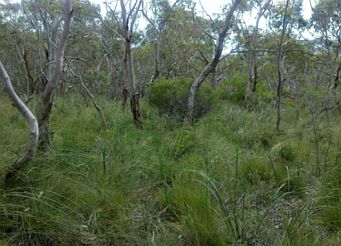
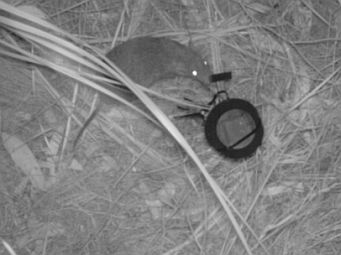
This project helps to ensure future survival of the Southern Brown Bandicoot at this small reserve.
Southern Brown Bandicoot in the wild on a farm adjoining the St Helens Reserve.
Read how an award winning wool grower in south west Victoria is achieving high quality wool whilst protecting Southern Brown Bandicoots.
In: Beyond the Bale, Issue 67 June 2016 page 22. A publication by the Australian Wool Innovation Ltd. & The Woolmark Company.
Pathways to Parks & Pallisters
This project by Basalt to Bay Landcare Network involves creation of a Linear reserve between Barkers Road and Broadwater Bushland Reserve (managed by ParksVic) and linking farm shelterbelts to connect this site to next linear reserve closer to St Helens Flora Reserve.
The project will rebuild lost ecological function by adding guarded species already present in site & guarding existing to enable their improved growth. Removing & controlling weeds. The project will help movement of Southern Brown Bandicoots and include artificial refuges.
Surveys and monitoring of flora and fauna plus feral species will be undertaken as part of the project.
Funding from St Helens ,& District Landcare Group, Ryan Corner Community Fund.
Basalt to Bay Landcare ceased operation in 2024.
Citizen Science monitoring - Bandicoot Motels
As part of a Citizen Science Bandicoot monitoring project a volunteer is carrying out on-going monitoring in St Helens Reserve to learn about how the Bandicoot Motels are being used by wildlife.
In all, 21 Bandicoot Motels have been installed since 2019, 8 within St Helens Reserve, 3 on nearby private land and 10 on other Parks Victoria managed reserves in close proximity to St Helens reserve.
This project is part of a 5-year monitoring program in seven under-surveyed reserves around Moyne Shire to boost flora and fauna records under permit from Parks Victoria.
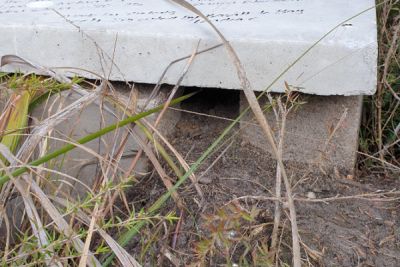
Bandicoot Motels are easy to construct with durable materials that will last for many years providing a safe haven for bandicoots. More details. Image: Biodiversity Innovations.
Glenelg Ark
Glenelg Ark started in 2005. It is a partnership between Parks Victoria and the Department of Environment, Land, Water & Planning
Glenelg Ark includes a monitoring program in three baited and three non-baited areas in the Lower Glenelg National Park, Cobboboonee National Park, Annya State Forest, Mount Clay State Forest and Hotspur State Forest. It is the largest fox control project on public land in South West Victoria, operating across 90,000 hectares.
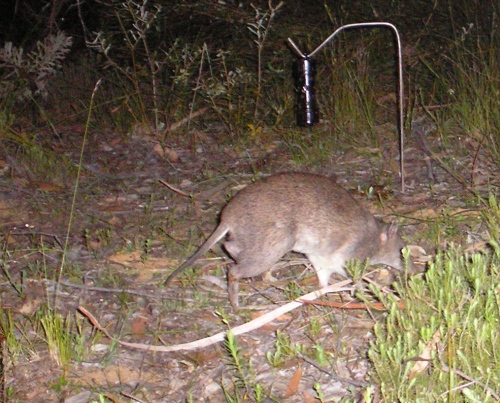
Report
Glenelg Ark 2005–2013: Evidence of the Benefits for Native Mammals of Sustained Fox Control (Robley et al. 2014)
Southern Brown Bandicoot & Long-nosed Potoroo Surveys in Wimmera & Greater Grampians
This project commenced in 2010 with the aim of obtaining information on presence of these species and direct this information into fire operation planning.
Following development of Remote camera survey protocols in the Grampians in 2010, surveys were conducted at:
- Deep Lead Nature Conservation Reserve from July - August 2010
- Grampians State Forest in November - December 2010
- Beear State Forest in December 2010 - January 2011
- Black Range Scenic Reserve in March 2011.
- Black Ranges region, private land June 2011
In June 2011, Twenty Scout Guard cameras were used over a 21 day period at 54 sites and covering approximately 1000 ha. No Southern Brown Bandicoots or Long-nosed Potoroos were detected in the camera surveys.
Live trapping was also conducted during March 2011 on the eastern fringe of the Grampians National Park adjoining private land (within the Pomonal area).Three Southern Brown Bandicoots were detected on private land on the eastern fringes of the Grampians National Park.
In 2011/12 large scale surveys targeting the Southern Brown Bandicoot and Long-nosed Potoroo were conducted across public and private land on the eastern and western fringes the Grampians National Park. Surveys included the Black Range near Stawell. These surveys complete previous surveys on private properties to determine if any Southern Brown Bandicoots remain in the Black Range.
Most of the project sites in 2011 were in proposed burn areas which have suitable habitat for the Southern Brown Bandicoot and Long-nosed Potoroo.
Results
Outside of the Grampians National Park, Southern Brown Bandicoots are present on private land in the eastern fringes of the park. The Southern Brown Bandicoot and Long-nosed Potoroo are yet to be detected on Crown Land east and west of the Grampians National Park.
Partnerships
The Southern Brown Bandicoot and Long-nosed Potoroo surveys are being conducted through biodiversity staff at the Department of Environment, Land, Water & Planning, Horsham. For surveys near Stawell there are close ties with Project Platypus which is an initiative of Upper Wimmera Landcare. In conjunction with the Black Range Landcare group, the profile of the Southern Brown Bandicoot received a boost through a project in 2006/07 which highlighted the plight of the threatened Southern Brown Bandicoot. The Black Range Bandicoot Recovery team launched a Bandicoot Education Kit, planted trees to enhance corridors, undertook bandicoot surveys and implemented a fox and feral cat control program and has put together a Recovery Plan for the area.
Project Platypus also incorporates the Bandicoot Highway project which aims to create a wildlife corridor from the Black Range to Jallukar Forest with the eventual aim of linking the Grampians N.P. to the Black Range which will enable bandicoots to move between these areas.
Parks Victoria are also involved where surveys are conducted within areas under their jurisdiction.
The Southern Brown Bandicoot and Long-nosed Potoroo surveys are also supported by the Wimmera Catchment Management Authority and the Commonwealth Caring for Country program.
Southern Brown Bandicoot video taken with remote camera in the Fyans Creek area, east of the Grampians, Victoria. This footage taken in February 2018 confirms an exciting new find of this species on private land near the Grampians. Courtesy Clive Carlyle. More images Google photos.
Southern Brown Bandicoot Recovery Program - Western Port Biosphere
This project commenced in 2003 and is focused on securing the population of Southern Brown Bandicoots at remnant habitat in the Koo Wee Rup area.
Key activities include;
- Extend and improve bandicoot habitat and reserves by reconnecting the landscape.
- Implement effective control and monitoring of pest predators.
- Accurately survey known habitat and collect habitat and environmental information relevant to community ecology and condition.
- Assess the feasibility of translocating bandicoots from one safe space to another; identify source populations and then identify potential release sites and what infrastructure may be required there.
- Control (or at least reduce) threats from road mortality.
- Further clarify the taxonomy and genetic status of populations to enable an accurate conservation status assessment of the taxon.
- Improve the control of companion animals, particularly dogs and cats.
- Analyse and compare population census data with management histories.
- Assess the need for, and feasibility of, a captive breeding population.
- Engage a community education facilitator.
- Heighten public awareness of the recovery program, including encouraging the public to report bandicoot sightings.
- More details: Western Port Biosphere web site
Southern Brown Bandicoots at Mt Rothwell
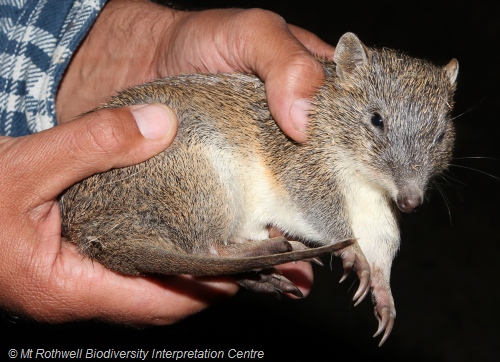
Southern Brown Bandicoots are protected behind predator proof fencing at the 420 ha private property Mt Rothwell Biodiversity Interpretation Centre near Lara. As well as providing a predator free area for the bandicoots efforts have been directed to reducing competition from the introduced European rabbit. During 2014 to 2016 it is estimated that approx. 15,000 rabbits have been removed from the area thus increasing the quality of grassy cover in the reserve and providing more habitat for the Southern Brown Bandicoot population.
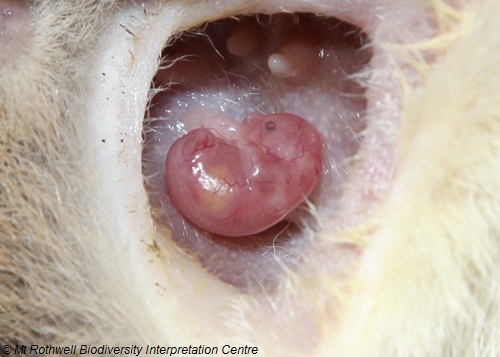
References & Links
ALA (2016) Atlas of Living Australia. Accessed 10 June 2016.
Bruce, M.J., Bryant, D.B., Kohout, M., Macak, P.V., Batpurev, K. and Sinclair, S.J., (2022). Southern brown bandicoots, Isoodon obesulus obesulus, occupy the margins of artificial waterways, in preference to bushland remnants or roadside vegetation. Wildlife Research 50 (1), 68-75
The Australian Museum Complete Book of Australian Mammals, Ed. Ronald Strahan, (Southern Brown Bandicoot, R.W. Braithwaite), Angus & Robertson Publishers, 1983.
Menkhorst, P.W. & Seebeck, J.H (1995) In: Mammals of Victoria, Distribution, ecology and conservation, Ed. Peter Menkhorst, (Southern Brown Bandicoot, Oxford University Press, 1995.
DELWP (2020) Provisional re-assessments of taxa as part of the Conservation Status Assessment Project – Victoria 2020, Department of Environment Land Water and Planning, Victoria. Conservation Status Assessment Project – Victoria
Department of Sustainability & Environment (2013) Advisory List of Threatened Vertebrate Fauna in Victoria – 2013. Department of Sustainability & Environment, East Melbourne, Victoria (now Department of Energy, Environment and Climate Action, Victoria).
FFG Threatened list (2024) Flora and Fauna Guarantee Act 1988 - Threatened List - June 2024 Department of Energy, Environment and Climate Action, Victoria
VBA (2016) Victorian Biodiversity Atlas, Department of Environment, Land, Water & Planing, Victoria.
Please contribute information regarding Southern Brown Bandicoot in Victoria - observations, images or projects. Contact SWIFFT

